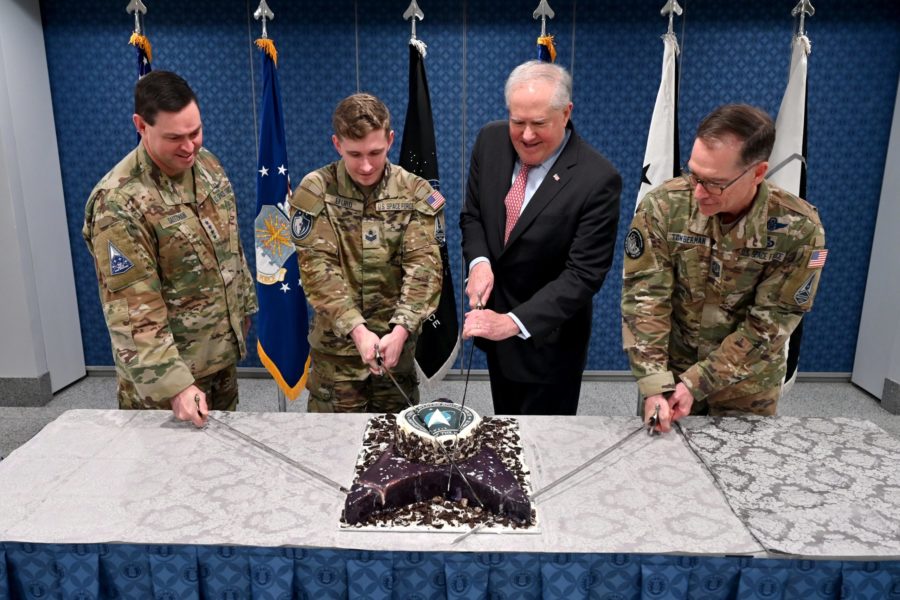The U.S. Space Force officially turned 3 years old on Dec. 20, marked by a flurry of social media posts and celebrations for the nation’s youngest military service—and signaling yet another milestone in its maturation.
In an image shared to Twitter, Chief of Space Operations Gen. B. Chance Saltzman sliced a cake alongside Air Force Secretary Frank Kendall, Chief Master Sergeant of the Space Force Roger A. Towberman, and a young Guardian. It is the first time since the service was founded Dec. 20, 2019, that it has not had Gen. John W. “Jay” Raymond as its leader.
“We may be young, but our capabilities are mature beyond our years!” Saltzman wrote in his tweet. “ … CMSSF Towberman and I want to thank our Guardians and their families for all they do each and every day in service to our nation!”
It has been an eventful year for the Space Force, which entered Year three of its existence looking to increase its focus on fighting and “lethality.”
Over the past 12 months, the service has expanded its presence, establishing new component commands at U.S. Indo-Pacific Command, U.S. Central Command, and U.S. Forces Korea. Another component command will stand up soon in U.S. European Command.
The Space Force also welcomed in hundreds of transfers from the other services, and several civilians who commissioned in at a higher rank than typical, thanks to extensive industry experience, and it brought the entire Space Development Agency into its organization.
The service also continued to refine its core doctrine and strategies, with more and more emphasis on building resiliency in orbit. Space Operations Command released a strategic plan, and Space Training and Readiness Command has published a series of “Space Doctrine Publications.” The Pentagon also updated its space policy.
USSF also beefed up its training exercises, with its signature Space Flag exercise gaining Joint accreditation and several new exercises in the works.
The service even adopted its own official song, “Semper Supra.”
Yet there is still more to come in Year Four. SDA is planning to launch the first of what will become a constellation of satellites that will make up the National Defense Space Architecture, a massive constellation in low-Earth orbit.
Saltzman has pledged to keep driving the service to become the “combat-ready force that our nation needs.” In an interview with Air & Space Forces Magazine, he spoke recently of the need for “substantial growth” in specific areas, including building up Space Force Headquarters at the Pentagon, and ramping up the focus on warfighting and the serious threats the nation faces in space.
Everything from uniforms to a new fitness program to the organization of the service’s part-time elements continues to develop, making it clear 2023 will be another busy one for the nation’s newest and smallest military service.
